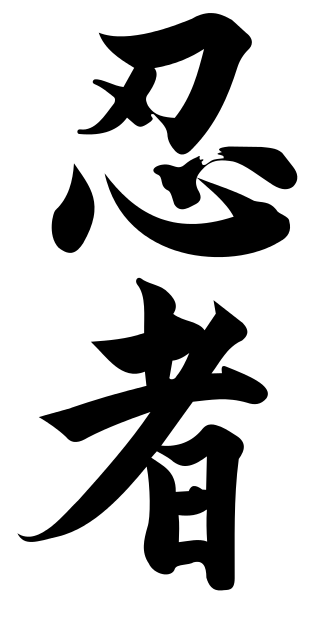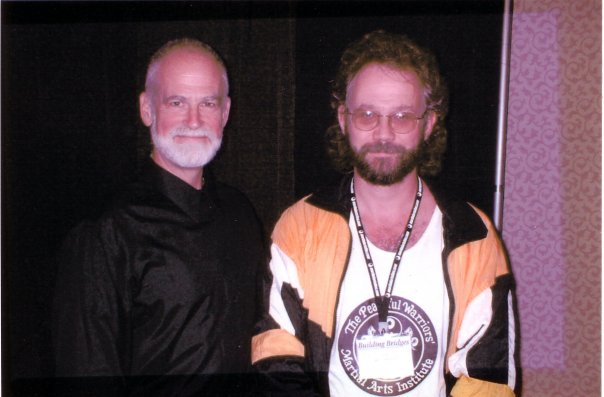History of Ninjutsu

History of Ninjutsu as presented by the World Budo Alliance as part of its preservation of martial art history project. First of all Ninjutsu (or more traditionally known as Ninpō) is a Japanese martial arts style focusing on the use of stealth and deception in order to defend oneself or fulfill an objective. And the martial arts of Ninjutsu is commonly associated with the Japanese Shinobi (or Ninjas). Most important to understand is Hollywood's depiction of the Ninja was in no way accurate.
Most of all is the need to understand that this martial arts style utilizes a variety of martial arts skills such as take-downs, the use of Ninjutsu weapons (i.e. Shuriken, Kunai, Shuko and Kyoketsu-Shoge) and stealth (for purposes of defense, information gathering, and other tasks).
History of Ninjutsu - Techniques
- Ninjutsu traditionally focuses on the following 18 different martial arts skills. However, there are different descriptions of Ninjutsu skills among different “schools” that ascribe to “Ninjutsu” techniques.
- Seishinteki kyōyō – spiritual refinement
- Taijutsu – unarmed combat
- Kenjutsu – sword techniques
- Bojutsu – stick and staff techniques
- Sōjutsu – spear techniques
- Naginatajutsu – naginata techniques
- Kusarigamajutsu – kusarigama techniques
- Shurikenjutsu – throwing weapons techniques (i.e. shuriken)
- Kayakujutsu – pyrotechnics
- Hensōjutsu – disguise and impersonation
- Shinobi-iri – stealth and entering methods
- Bajutsu – horsemanship
- Sui-ren – water training
- Bōryaku – tactics
- Chōhō – espionage
- Intonjutsu – escaping and concealment
- Tenmon – meteorology
- Chi-mon – geography
- Hojojutsu – Rope techniques
History of Ninjutsu
Meanwhile in order to understand the history of Ninjutsu or the ninja, one has to totally release these terms as they only represent how we currently see Ninjutsu. And unlike other martial arts, Ninjutsu has no “founded here” point in history. On the other hand an American man who is discussed below Stephen Hayes is however responsible for the art coming to the west.
But through a deeper understanding of Japanese history, references can be made to appreciate Ninjutsu’s place in time and in the history of martial arts. Therefore I hope that doesn’t discourage you from reading on. But it’s complexity is the simple truth. Most of all the word “Shinobi” is a much better term to find historical reference to the ninja as we know it.
And the Hojo Godai-ki uses other terms for ninja such as rappa and seppa, while the Koyo Gunkan uses kagimono-kiki.
Thus in the 6th century BCE, the Sonbu no heiho contained early Japanese military strategy. And it was made up of teachings from the famous Sun Tzu, author of “Art of War” (6th century BC), Se Ma (6th century BC), and Zi (3rd century BC). Most of all according to historians, there is a chapter at the end of the Art of War that contains the fundamentals of Ninjutsu. Therefore was Ninjutsu the martial art that made the teachings of Sun Tzu about deception and invisibility possible?
History of Ninjutsu
Thus as immigrants began to arrive in Japan from China and Korea, the styles of Kempo , and genjutsu were mixed with the local techniques of Japan. And among these immigrants were warrior monks and military personnel that settled in mountainous areas where they met the yamabushi (hermits of the mountains). Meanwhile these mountain hermits, warrior monks, and ascetics used early forms of Ninjutsu. Thus it was in this time that these yamabushi developed the mysterious and supernatural persona of the ninja we know today. And even though these warriors remained separated from society, many senior government officials and warrior families maintained close relationships to these yamabushi. Who, at times, carried out jobs that needed to be kept secret.
Therefore to fully understand Ninjutsu as a martial art, one must first comprehend the combat culture of Japan in that era. Thus you will see the use of Shinobi by the elite class (Emperors, Princes) and shoguns (military leaders equivalent to generals).
Most important is spying in Japan dates as far back as Prince Shōtoku (572–622). And according to Shōninki, the first open usage of Ninjutsu during a military campaign was in the Genpei War. Thus this was when Minamoto no Kuro Yoshitsune chose warriors to serve as shinobi during a battle. And this manuscript goes on to say that during the Kenmu era, Kusunoki Masashige frequently used Ninjutsu. But according to footnotes in this manuscript, the Genpei War lasted from 1180 to 1185. And the Kenmu Restoration occurred between 1333 and 1336. Thus Ninjutsu was developed by the samurai of the Nanboku-cho period. And further refined by groups of samurai mainly from Kōka and the Iga Province of Japan in later periods.
History of Ninjutsu
Throughout history, the Shinobi were assassins, scouts, and spies. And who were hired mostly by territorial lords known as daimyō. Despite being able to assassinate in stealth, the primary role was as spies and scouts. Shinobi are mainly noted for their use of stealth and deception. They would use this to avoid direct confrontation if possible, which enabled them to escape large groups of opposition.
Many different schools (ryū) have taught their unique versions of Ninjutsu. Certainly an example of these is the Togakure-ryū, which claims to have been developed after a defeated samurai warrior called Daisuke Togakure escaped to the region of Iga. He later came in contact with the warrior-monk Kain Doshi, who taught him a new way of viewing life and the means of survival (Ninjutsu).
Ninjutsu was developed as a collection of fundamental survivalist techniques in the warring state of feudal Japan. That is to say the ninja used their art to ensure their survival in a time of violent political turmoil. Therefore Ninjutsu included methods of gathering information and techniques of non-detection, avoidance, and misdirection. And Ninjutsu involved training in free running, disguise, escape, concealment, archery, and medicine. Skills relating to espionage and assassination were highly useful to warring factions in feudal Japan. Therefore at some point, the skills of espionage became known collectively as Ninjutsu. As a result the people who specialized in these tasks were called Shinobi no mono.
Stephen K. Hayes

If I was going to point at one person in particular for bringing Ninjutsu to the Western World it would be Grand Master Hayes. I met him in 2003 and was amazed at his dedication to the arts, and his desire to take the Hollywood image out of the Ninja and bring the true art forward.
Grand Master Hayes has many books and articles on Ninjutsu and his teachings. Thank you and I hope you enjoyed the History of Ninjutsu.
Yours in the arts,
Grand Master Art Mason